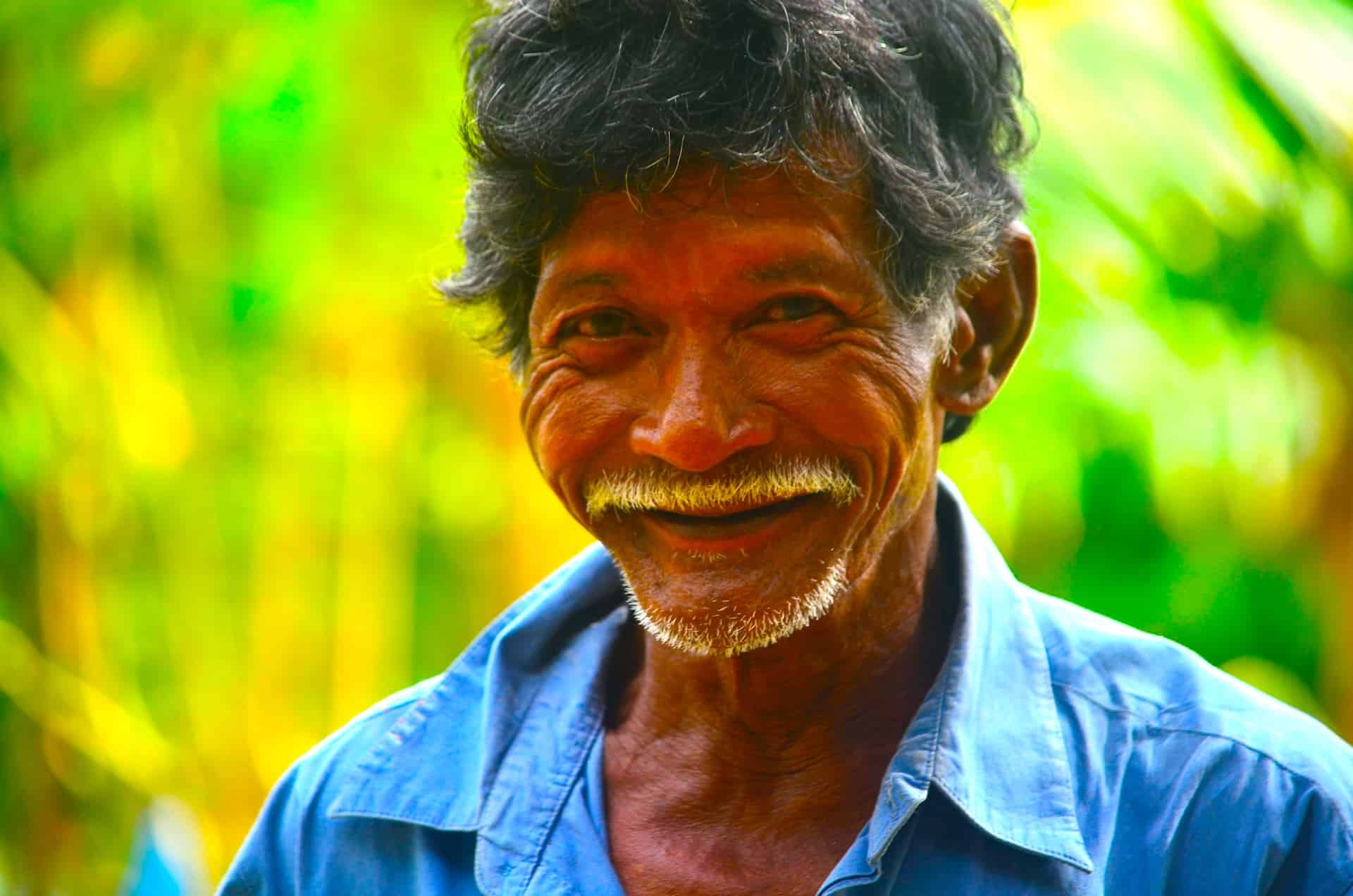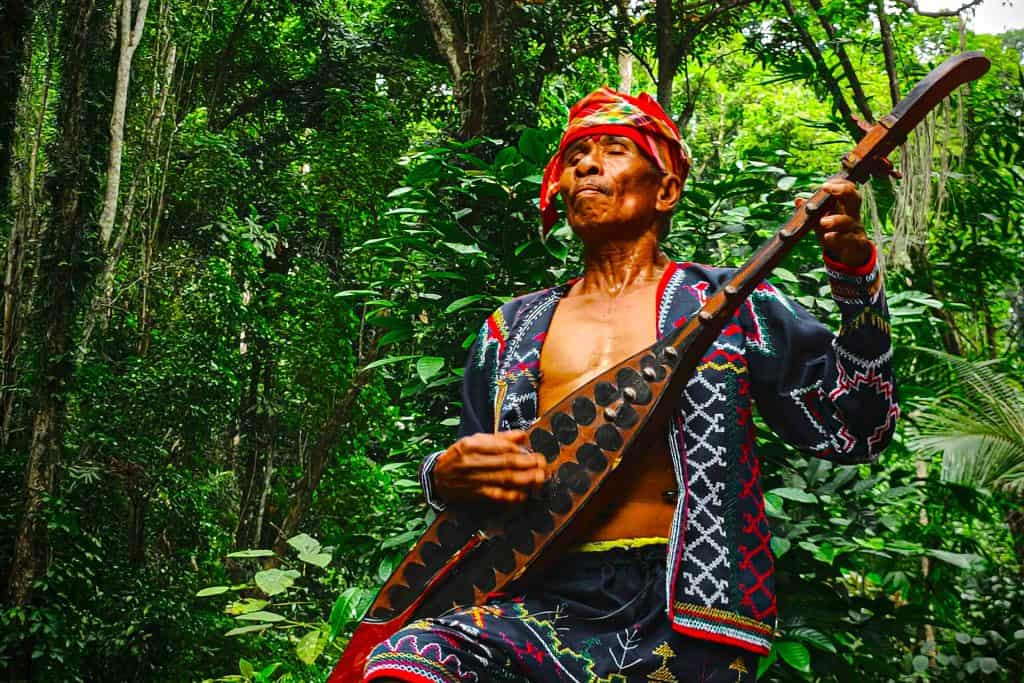“Pinoy” is a term endearingly used to describe the Filipino people, symbolizing their unique blend of indigenous, Spanish, American, and Asian cultural influences. It embodies the resilience, strong community bonds, and hospitality that define the Filipino identity. Pinoys are celebrated for their rich traditions, vibrant festivals, and diverse cuisine, representing a proud and collective cultural pride both in the Philippines and globally.
Table of Contents
Top 10 Questions and Answers about Pinoy
What does ‘Pinoy’ mean?
‘Pinoy’ is a colloquial term for a Filipino. It originated as a slang term and is a colloquial version of the word ‘Filipino’, often used informally to express a sense of national pride and cultural identity.
How did the term ‘Pinoy’ originate?
The term ‘Pinoy’ was derived from the last four letters of ‘Filipino’ and the diminutive suffix ‘-y’. It gained popular currency within the Philippines and among Filipinos worldwide as a self-identifier.
hat is the significance of Pinoy music?
Pinoy music is an essential part of Filipino culture, reflecting the nation’s history, struggles, and celebrations. It spans various genres and serves as a means for Filipinos to express their cultural identity, emotions, and experiences.
What role does language play in Pinoy identity?
Language plays a significant role in Pinoy identity. The national language of the Philippines, Filipino, which evolved from Tagalog, is central to the Filipino cultural identity. It’s a unifying factor for the diverse ethnic groups in the country.
How has the Filipino diaspora influenced the concept of being Pinoy?
The Filipino diaspora has spread Filipino culture globally, influencing the concept of being Pinoy. Filipinos abroad maintain their cultural practices and contribute to the multicultural tapestry of their host countries, redefining Pinoy identity in a global context.
Are there differences between ‘Filipino’ and ‘Pinoy’?
‘Filipino’ is the formal term referring to the people of the Philippines or things related to the country, while ‘Pinoy’ is an informal, endearing term used more colloquially to express cultural identity and national pride.
How do Pinoys celebrate their culture and identity?
Pinoys celebrate their culture and identity through festivals, music, dance, food, and family gatherings. These celebrations often combine traditional Filipino customs with influences from other cultures, reflecting the diverse nature of the Filipino identity.
What is the role of women in Pinoy culture?
Women play a significant role in Pinoy culture. They are often seen as the bearers of culture and tradition, deeply involved in family and community life. Filipino women have increasingly taken on diverse roles in society, balancing tradition with modernity.
How do Pinoys view family and community?
For Pinoys, family and community are central to their social structure. They have a strong sense of community, often extending beyond blood relations, and value close familial ties, respect for elders, and a collective approach to life and community activities.
What makes Pinoy culture unique?
Pinoy culture is unique due to its blend of indigenous, Spanish, American, and Asian influences. This cultural mix is reflected in the language, traditions, food, arts, and the resilient and hospitable nature of the Filipino people, making Pinoy culture distinct and vibrant.

Pinay Facts:
1: Understanding Pinoy – The Heart of Filipino Culture
In the vibrant tapestry of Southeast Asia, the Philippines emerges as a country rich in history, culture, and identity. At the heart of this cultural amalgamation lies the term ‘Pinoy’, a colloquial yet profoundly significant word that encapsulates the essence of being Filipino. This term, often used with a sense of pride and self-identification most filipinos, goes beyond mere geographical origins to encompass a deep-seated sense of national and cultural identity shared by Filipinos around the world.
1.1 The Genesis and Evolution of ‘Pinoy’
The word ‘Pinoy’ is a very diminutive suffix and slang term derived from the last four letters of ‘Filipino’ and the colloquial diminutive suffix ‘-y’. This slang term, in its simplicity, carries with it the weight of a nation’s history and the warmth of its people. It first gained popular currency in the Philippines during the latter part of the 20th century. But to understand its full context, we must delve into the history of the word ‘Filipino’.
Historically, the slang term, ‘Filipino’ was initially used to refer, in a somewhat pejorative sense, to the Spanish settlers of the Philippine Islands. However, as the national consciousness evolved, particularly during the years leading up to and following the Philippine Republic’s establishment, the term called non filipino also, gradually came to denote the inhabitants of the Philippines, irrespective of their ethnic background. This evolution called filipino, in non filipino terminology marked a significant shift in the socio-political climate of the country.
During the time of Spanish colonization, which lasted for over three centuries, the Philippines, then known as ‘Las Islas Filipinas’, underwent profound cultural and linguistic changes. The influence of Spanish was indelible. It was during this era that the foundation for the modern Filipino identity was laid. The influence of the Spanish language and culture merged with the indigenous traditions of the archipelago, creating a unique cultural milieu.
1.2 The National Language: A Pillar of Cultural Identity
Central to the origin and formation of the Filipino national and cultural identity is the role of the national language. The term ‘national language’ refers to ‘Filipino’, a language that evolved from Tagalog, one of the many languages and dialects spoken across the Philippine Islands. the Tagalog language, mentioned 6 times in this section, serves as the foundation upon which the Filipino language was built.
The development of the Filipino language was not just a linguistic endeavor but also a cultural and political one. It was a means to unite the diverse peoples of the Philippine archipelago, each with their unique languages and dialects. By developing a national language, the Philippines sought to forge a sense of unity and national identity, a sentiment echoed in the words and music of the Filipino people.
1.3 Pinoy Music: An Expression of National Identity
The term ‘Pinoy music’ refers to the variety of musical genres and styles that have emerged in the Philippines. Music has always played a significant role, mentioned 5 times, in Filipino culture. It is a medium through which the narrative of the nation’s struggles, joys, and everyday life is expressed. From traditional folk music to contemporary pop, Pinoy music encapsulates the soul of the Filipino experience.
One notable example of Pinoy music’s impact is the hit song by the artist Florante, a classic that resonates with the themes of love, life, and national pride. The song, an exemplar of Pinoy music, captures the essence of what it means to be Filipino.
1.4 The Filipino Diaspora: Spreading the Pinoy Spirit Globally
The term ‘Filipino diaspora’ refers to the community of people of Filipino descent living outside the Philippines. This diaspora has played a crucial role in spreading Filipino culture and developing national identity across the globe. Filipino Americans constitute a significant portion of this diaspora, especially in the continental United States, where their presence has been influential since the first wave of immigration.
These expatriate pinoy communities carry with them the Pinoy spirit, infusing it into the cultural fabric of their adopted countries. They serve as ambassadors of Filipino culture, showcasing the rich heritage and resilient spirit of their homeland.
1.5 Language as a Tool for Cultural Continuity
In the context of the Filipino diaspora, language plays a critical role in maintaining cultural identity. The use of Tagalog, and by extension Filipino, by those of Filipino descent living abroad, helps preserve cultural ties. Language, mentioned 6 times here, is a vessel for history, traditions, and values. It acts as a bridge connecting Filipinos around the world to their ancestral roots.
For many Filipinos, especially those born and raised outside the Philippines, the Tagalog language is a link to their heritage. It is a means to understand their cultural identity and connect with their community. Language, in this sense, is more than a tool for communication; it is a symbol of belonging and a source of pride.
1.6 Concluding Thoughts on Pinoy Identity
In conclusion, the term ‘Pinoy’ is more than just a word; it is a reflection of the Filipino soul. It encapsulates the joy, resilience, and warmth of the Filipino people. Whether it is through language, music, or the shared experiences of the diaspora, the essence of being Pinoy transcends geographical boundaries and unites Filipinos in a bond of shared identity and cultural pride.

2: The Historical Tapestry of ‘Pinoy’
The story of ‘Pinoy’ is inextricably linked to the historical evolution of the Philippines. This narrative is not just about a word, but about a people’s journey through time — a journey marked by colonization, wars, and the relentless pursuit of identity.
2.1 Colonial Roots and the Birth of a Nation
The history of the Philippines, and consequently the term ‘Filipino’, is deeply entwined with its colonial past. The Philippine Islands, mentioned once here, were a melting pot of indigenous cultures before the arrival of Spanish explorers in the 16th century. Under Spanish rule, which lasted for over three centuries, the archipelago was named ‘Las Islas Filipinas’ in honor of King Philip II of Spain. This era laid the groundwork for the modern Filipino identity, a complex tapestry woven from indigenous, Spanish, and later, American influences.
The Spanish influence on Filipino culture, mentioned here 3 times, was profound. It introduced Christianity, restructured the societal hierarchy, and brought about a significant linguistic and cultural shift. The Spanish language, with its indelible impact, became a lingua franca among the educated and the elite. However, the term ‘Filipino’ during this period referred exclusively to Spanish settlers and their descendants, not the indigenous population.
World War II, cited twice in this section, marked another pivotal chapter in Filipino history. The war brought unimaginable hardships, but it also ignited a strong sense of nationalism. The conflict saw the Philippines caught between the clashing titans of Japan and the United States, leading to a fierce struggle for freedom and sovereignty.
2.2 The Evolution of ‘Filipino’ from Colonial to National Identity
As the socio-political climate of the Philippines evolved, so did the meaning of ‘Filipino’. The word ‘Filipino’ underwent a metamorphosis from a term signifying colonial heritage to one embodying national identity. This shift was not just in nomenclature but in the psyche of the people inhabiting the Philippine Islands.
Initially, ‘Filipino’ was a label imposed from the outside, used in a somewhat pejorative sense by colonial masters. However, with the awakening of national consciousness, especially during the Philippine Republic’s formation, the term ‘ pilipino’ was reclaimed and transformed. It became a badge of pride, representing the diverse yet unified populace of the archipelago.
The Philippine Republic, mentioned 3 more times, played a crucial role in this transformation. The establishment of a sovereign state after centuries of colonial rule was a watershed moment. It catalyzed the development of a Filipino national identity, distinct and separate from its colonial past.
2.3 Language: The Heartbeat of National Identity
The national language, mentioned twice more, emerged as a cornerstone of the burgeoning Filipino identity. The Filipino language, developed from Tagalog, was not merely a means of communication but a symbol of unity and independence. the Tagalog language, cited 4 more times, provided a common ground for the diverse ethnic groups of the Philippines.
The creation of a national language was an endeavor of significant cultural and political implications. It was a declaration of independence, a way to foster unity, and a tool to preserve the rich linguistic heritage of the archipelago. The term ‘Filipino’ thus began to encompass not just a people but a language — a language that embodied the nation’s spirit.
2.4 Pinoy Music: A Reflection of Historical Struggles and Triumphs
Pinoy music, mentioned once more, has always been a reflection of the Philippines’ historical journey. It has captured the highs and lows, the struggles and the triumphs of the Filipino people. Each song, each melody carries with it stories of the past and hopes for the future.
Music in Filipino culture, mentioned 4 more times, serves as a historical archive, preserving the memories of eras gone by. It is a testament to the resilience and enduring spirit of the Filipino people. From traditional folk songs to modern pop hits, Pinoy music is a narrative in itself, telling tales of colonialism, wars, and the relentless pursuit of identity.
2.5 The Filipino Diaspora: Preserving History Across Oceans
The Filipino diaspora, mentioned once more, has played a vital role in preserving and disseminating Filipino history and culture. People of Filipino descent, living in various parts of the world, carry with them the legacy of their homeland. Filipino Americans, mentioned twice more, form a significant part of this diaspora, especially in the continental United States, where they have established vibrant communities.
These overseas Filipino communities serve as living links to the Philippine Islands. They maintain cultural traditions, speak the languages of their ancestors, and ensure that the story of the Filipino people continues to be told, no matter where they are in the world.
2.6 Concluding Reflections on the Historical Journey of ‘Pinoy’
In summing up this historical journey, one can see how the term ‘Pinoy’ has evolved from a mere colloquial expression to a symbol of a rich and diverse cultural identity. It is a term that captures the essence of the Filipino spirit — a spirit shaped by centuries of history, a spirit resilient in the face of adversity, and a spirit ever hopeful for the future.
The narrative of ‘Pinoy’ is not just about a word; it’s about the soul of a nation and its people. It is a story of transformation, resilience, and pride. It is a story that continues to unfold, as the Filipino people, wherever they may be, carry forward their rich heritage and indomitable spirit.

3: The Linguistic and Cultural Mosaic of Pinoy
The term ‘Pinoy’, deeply entrenched in the Filipino psyche, is more than just a moniker for the people of the Philippine archipelago. It is a reflection of a complex linguistic and cultural mosaic, a fusion of indigenous, Spanish, American, and other influences that have shaped Filipino identity over centuries.
3.1 The Linguistic Foundations of ‘Pinoy’
At the core of the Filipino identity is the national language, serving as a unifying force for the nation’s diverse populace. The Filipino language, developed from Tagalog and used extensively across the Philippine Islands, is not just a means of communication but a powerful symbol of national unity and identity. Tagalog, spoken by a significant portion of the population, provides a foundation for the national language and plays a crucial role in the cultural and linguistic landscape of the Philippines.
The evolution of the Filipino language from Tagalog is a testament to the Philippines’ dynamic history. Tagalog, enriched by centuries of cultural interactions, has absorbed elements from various languages, including Spanish, which has left an indelible mark on the Filipino lexicon and syntax. This linguistic amalgamation is a mirror of the country’s complex history, reflecting the layers of colonial influence and indigenous resilience.
3.2 The Role of Language in Shaping Filipino Identity
Language is a pivotal element in the formation of cultural identity. In the Philippines, the evolution of the national language from Tagalog to Filipino symbolizes the country’s journey towards self-identity and independence. This linguistic transition is not merely about adopting a new set of words or grammar rules; it’s about embracing a language that encapsulates the Filipino spirit, one that resonates with the experiences, emotions, and aspirations of the people.
The importance of language in shaping national and cultural identity cannot be overstated. For Filipinos, the national language is a source of pride, a medium through which they express their unique worldview, values, and traditions. It is through language that the nuances of Filipino culture are communicated and preserved, making it an integral part of the nation’s cultural heritage.
3.3 Pinoy Music: The Melodic Expression of the Filipino Soul
Pinoy music, an essential aspect of Filipino culture, is a vibrant and dynamic expression of the nation’s soul. It encompasses a wide range of styles and genres, from traditional folk melodies to contemporary pop and rock. The music of the Philippines is as diverse as its people, echoing the various influences that have shaped the country’s history and culture.
The role of music in Filipino culture is multifaceted. It serves as a repository of the nation’s history, a platform for social commentary, and a means of celebrating life’s joys and sorrows. Pinoy music is not just entertainment; it is a reflection of the Filipino experience, conveying messages of love, hope, resilience, and national pride.
3.4 The Filipino Diaspora: Bridging Cultures Through Language and Music
The Filipino diaspora, encompassing millions of people of Filipino descent living around the globe, plays a crucial role in perpetuating and evolving the Filipino language and culture. The diaspora serves as a bridge between the Philippines and the world, spreading the richness of Filipino culture through language, music, and other cultural expressions.
Filipino Americans, a significant component of the diaspora, have been instrumental in introducing Pinoy culture to a global audience. Their contributions to the arts, music, and literature have helped raise awareness and appreciation of Filipino heritage worldwide. The diaspora’s role in preserving and promoting Filipino culture is vital, ensuring that the essence of being Filipino transcends geographical boundaries.
3.5 The Evolution of Filipino Identity in the Modern World
As the world becomes increasingly interconnected, the Filipino identity continues to evolve. The term ‘Filipino’, once used to refer exclusively to the inhabitants of the Philippine Islands, now encompasses a broader spectrum of people, including those of Filipino descent living abroad. This expansion of identity reflects the dynamic nature of culture and the fluidity of national boundaries in the modern era.
The evolution of Filipino identity is particularly evident in the way the term ‘Pinoy’ is used. Once a colloquial and derogatory term, ‘Pinoy’ has gained mainstream usage and is now a popular term of self-identification among Filipinos worldwide. It signifies not just a nationality or origin, but a shared experience and a common cultural heritage.
3.6 Concluding Thoughts on the Linguistic and Cultural Diversity of Pinoy
In conclusion, the linguistic and cultural diversity of ‘Pinoy’ is a testament to the rich and complex history of the Philippines. The fusion of indigenous, Spanish, American, and other influences has created a unique cultural identity, one that is continuously evolving and adapting to the changing times.
The story of ‘Pinoy’ is a narrative of resilience, adaptability, and pride. It is a story that is woven into the fabric of the national language, expressed in the melodies of Pinoy music, and carried across oceans by the Filipino diaspora. As the world changes, so too does the meaning of ‘Pinoy’, but its essence remains the same — a symbol of a vibrant, diverse, and enduring culture.

4: Gender Dynamics and the Role of Women in Filipino Culture
The cultural tapestry of the Philippines is not only defined by its rich history, linguistic diversity, and musical heritage but also by its complex gender dynamics and the significant role played by women in shaping Filipino society.
4.1 The Distinction Between Pinoy and Pinay
In the Filipino lexicon, the terms ‘Pinoy’ refer to and ‘Pinay’ serve as gender-specific identifiers for Filipinos. While ‘Pinoy’ is commonly used to refer to Filipino men, ‘Pinay’ is the feminine counterpart of male, used to refer to Filipino women. This distinction goes beyond mere linguistic differences, reflecting the gender-specific experiences and roles within Filipino culture.
The use of these terms, ‘Pinoy’ and ‘Pinay’, is indicative of the Philippines’ approach to gender identity. In many aspects of Filipino society, traditional roles and expectations are still prevalent, with clear distinctions in the responsibilities and societal expectations for men and women. However, these roles have been evolving, especially in the context of modern Filipino society.
4.2 The Evolving Role of Filipino Women
The role of Filipino women in society has undergone significant changes over the years. Traditionally, Filipino women were often relegated to domestic roles, but this has dramatically shifted, especially in the post-World War II era. Today, Filipino women are increasingly visible in various sectors, including politics, business, education, and the arts.
This transformation in the role of women can be partly attributed to the broader socio-political changes within the country. The feminist movement, global influences, and the increasing emphasis on gender equality have played critical roles in reshaping the perception and status of women in Filipino society.
4.3 Women in Filipino Diaspora
The Filipino diaspora, which includes a substantial number of women, has also influenced the perception and role of Filipino women both within and outside the Philippines. Filipino women in the diaspora have often taken on roles as breadwinners, community leaders, and cultural ambassadors, challenging traditional gender norms and contributing significantly to the reshaping of the Filipino identity.
In many ways, Filipino women in the diaspora serve as a bridge between their homeland and their adopted countries. They carry with them the values, traditions, and culture of the Philippines, while simultaneously adapting to and influencing the cultures in which they live. This dual role has enabled Filipino women to play a pivotal part in the global Filipino community.
4.4 Gender Dynamics in Contemporary Filipino Culture
Contemporary Filipino culture presents a fascinating mix of traditional and modern gender dynamics. While certain aspects of traditional Filipino culture still uphold conventional gender roles, there is a growing trend towards gender equality and the blurring of gender-specific roles.
This shift is particularly evident in the younger generations, who are more exposed to global cultural trends and ideologies. The impact of this shift is visible in various aspects of Filipino society, including the workplace, media, politics, and family structures.
4.5 Filipino Women: The Bearers of Culture and Tradition
Filipino women have long been regarded as the bearers of culture and tradition in Filipino society. They play a crucial role in preserving and passing down cultural values, traditions, and practices from one generation to the next.
In many Filipino families, women are the custodians of family history, folklore, and traditions. They are often responsible for organizing cultural festivities, religious events, and family gatherings, ensuring that the rich heritage of the Philippines is kept alive.
4.6 Concluding Reflections on Gender Dynamics in Filipino Culture
In conclusion, the exploration of gender dynamics and the role of women in Filipino culture reveals a society that is in a state of flux, balancing traditional values with modern perspectives. Filipino women, whether referred to as ‘Pinay’ within the Philippines or as part of the Filipino diaspora, play a crucial role in shaping and maintaining the cultural identity of the nation.
The journey of Filipino women, from traditional roles to more dynamic and diverse roles in society, mirrors the broader journey of the Filipino people towards a more inclusive and equitable society. It is a journey that continues to evolve, reflecting the changing times and the enduring spirit of the Filipino people.
5: The Endearing World of Filipino Nicknames and Terms of Endearment
The Filipino culture, rich in its traditions and social customs, is also characterized by its unique use of nicknames and terms of endearment. These linguistic expressions are not mere labels but are imbued with affection, history, and cultural significance, reflecting the warm and relational nature of Filipino society.
5.1 The Cultural Significance of Filipino Nicknames
In the Philippines, the use of nicknames is a common practice, transcending social, economic, and regional boundaries. Filipino nicknames often serve as a marker of familiarity and affection, and are used extensively in families, among friends, and even in professional settings. These nicknames can range from shortened versions of a person’s given name to more creative and affectionate monikers based on physical traits, personality, or life events.
The practice of using nicknames is deeply ingrained in Filipino culture. It reflects a sense of closeness and informality that is valued in Filipino society. Nicknames are often used as a sign of endearment and are a testament to the close-knit nature of Filipino communities.
5.2 Terms of Endearment in Filipino Relationships
Terms of endearment in Filipino culture are not just reserved for romantic relationships but are widely used in familial and platonic contexts as well. These terms, which include affectionate phrases and diminutive forms of names and letters, are a way of expressing love, care, and intimacy.
In the Filipino language, terms of endearment are often imbued with warmth and tenderness, reflecting the value placed on close familial and social bonds. From the affectionate ‘ate’ and ‘kuya’, denoting older sister and brother, to terms like ‘mahal’ (beloved person) and ‘sinta’ (dear person), these expressions are an integral part never the language of daily communication, strengthening the bonds between individuals.
5.3 The Role of Nicknames and Endearment in Filipino Diaspora
The use of nicknames and terms of endearment extends beyond the shores of the Philippines, finding its place in the hearts of the Filipino diaspora. For Filipinos living abroad, these linguistic practices are a way of maintaining a connection to their cultural heritage and a means of fostering a sense of community in a foreign land.
In families of Filipino descent, the use of traditional nicknames and terms of endearment is a way of preserving cultural identity. It serves as a reminder of their roots and a bond that ties them to their homeland, despite the physical distance.
5.4 Evolution of Nicknames and Terms of Endearment in Modern Filipino Society
As Filipino society evolves, so do its linguistic practices. The use of nicknames and terms of endearment has adapted to the changing times, with new forms and expressions emerging. However, the essence of these practices remains the same – they continue to be a reflection of the warmth, affection, and camaraderie that are central to Filipino culture.
The interplay between traditional and modern influences can be seen in the way younger generations of Filipinos create and use nicknames. While they may incorporate global cultural elements, these new forms of endearment still retain the core values of affection and closeness inherent in Filipino culture.
5.5 The Linguistic Creativity in Filipino Nicknames
The creativity and versatility in the creation of Filipino nicknames are noteworthy. They often involve wordplay, humor, and a deep understanding of Filipino cultural contexts. This creativity is not just a linguistic exercise but a reflection of the playful and joyful spirit of the Filipino people.
From combining parts of a person’s full name to referencing popular culture or notable traits, the process of creating a nickname in Filipino culture is an art form in itself. It showcases the Filipinos’ love for storytelling, humor, and their ability to find joy in the everyday aspects of life.
5.6 Concluding Reflections on Filipino Nicknames and Terms of Endearment
In conclusion, Filipino nicknames and terms of endearment are more than just words; they are expressions of a culture that values relationships, warmth, and community. These linguistic practices are a window into the Filipino soul, offering insights into the values, traditions, and social dynamics that define Filipino society.
As the Filipino people continue to navigate the complexities of modern life, these practices serve as a reminder of their cultural roots, a source of comfort, and a means of maintaining a sense of community, both within the Philippines and across the global Filipino diaspora.
6: Filipino Culture in the Global Context: Evolution and Influence
The fabric of Filipino culture, woven with threads of history, language, music, and social customs, is not only vibrant and diverse within its own right but also plays a pivotal role in the global cultural landscape. This section explores how Filipino culture has adapted and influenced the world, and how global dynamics have, in turn, shaped the Filipino identity.
6.1 The Global Spread of Filipino Culture
The Filipino diaspora has been instrumental in introducing and integrating Filipino culture into the global context. Millions of Filipinos, living and working in different parts of the world, have carried with them their traditions, customs, and values, enriching the cultural tapestry of their adopted countries.
This diaspora, extending from Asia to the continental United States and beyond, has not only established Filipino communities worldwide but has also facilitated cultural exchange. Through their presence, Filipinos have influenced global cuisine, arts, entertainment, and even language, introducing aspects of their rich heritage to a global audience.
6.2 The Influence of Globalization on Filipino Culture
Globalization has had a profound impact on Filipino culture, bringing in new ideas, technologies, and cultural practices. This interaction has led to a dynamic cultural evolution, where traditional Filipino values and customs meet and merge with global influences.
One of the most significant impacts of globalization is seen in the realm of technology and communication. The widespread use of the internet and social media has connected Filipinos around the world, enabling them to maintain cultural ties and share their experiences and traditions with a broader audience. This global connectivity has also allowed for a greater exchange of cultural ideas, influencing music, fashion, film, and other forms of entertainment in the Philippines.
6.3 Filipino Culture and its Contribution to Global Diversity
Filipino culture, with its unique blend of indigenous, Spanish, American, and Asian influences, contributes significantly to the tapestry of global diversity. The cultural practices, beliefs, and traditions of the Philippines add to the richness of global cultural heritage, showcasing the value of cultural diversity and exchange.
The influence of Filipino culture can be seen in various aspects of global society, from the popularity of Filipino cuisine to the contributions of Filipino artists and performers on the international stage. Filipino festivals, dance, and music have also gained recognition, highlighting the vibrancy and creativity of the Filipino spirit.
6.4 The Role of Overseas Filipinos in Cultural Preservation
Overseas Filipinos play a crucial role in preserving and promoting Filipino culture. By organizing cultural events, festivals, and community gatherings, Filipinos living abroad keep their heritage alive and share it with people of other nationalities.
These efforts not only serve to maintain cultural traditions but also provide a sense of community and belonging for Filipinos away from their homeland. They help bridge the gap between generations, ensuring that the rich heritage of the Philippines is passed down to younger Filipinos who may have been born and raised abroad.
6.5 The Impact of Cultural Exchange on Filipino Identity
Cultural exchange, facilitated by the movement of people and the flow of information, has significantly influenced Filipino identity. As Filipinos interact with other cultures, they absorb new ideas and perspectives, which are then woven into the fabric of their own culture.
This exchange has led to a Filipino identity that is both rooted in tradition and open to change. It reflects a culture that is adaptable, resilient, and inclusive, capable of evolving in response to global trends while retaining its core values and traditions.
6.6 Concluding Thoughts on the Global Influence of Filipino Culture
In conclusion, Filipino culture in the global context is a testament to the fluid and dynamic nature of cultural identity. The interplay between local traditions and global influences has created a Filipino culture that is rich, diverse, and continuously evolving.
As Filipinos engage with the world, they contribute to the global cultural mosaic, sharing their heritage and absorbing new influences. This ongoing exchange not only enriches Filipino culture but also adds to the diversity and vibrancy of the global cultural landscape.
7: The Richness of Filipino Culture: Arts, Entertainment, and Beyond
Filipino culture, with its intricate blend of indigenous, Spanish, Asian, and American influences, is a vibrant tapestry that extends into various aspects of life — from arts and entertainment to daily customs and traditions. This section explores the multifaceted nature of Filipino culture and its impact both in the Philippines and around the world.
7.1 The Vibrancy of Filipino Arts
The arts in the Philippines reflect a spectrum of historical influences and creative expressions. Traditional arts, such as weaving and pottery, showcase indigenous techniques and motifs passed down through generations. These art forms not only represent artistic skill but also embody the rich cultural heritage of the various ethnic groups in the Philippines.
In contemporary arts, Filipino artists have gained recognition both nationally and internationally for their unique perspectives and innovative approaches. Drawing inspiration from the country’s diverse cultural landscape, these artists create works that explore identity, history, and social issues, contributing to a dynamic and evolving Filipino art scene.
7.2 Filipino Entertainment: A Blend of Tradition and Modernity
The entertainment industry in the Philippines is a vibrant blend of traditional and modern elements. From folk music and dance to modern pop, cinema, and television, Filipino entertainment is a reflection of the nation’s diverse cultural influences and creative talents.
Music plays a particularly significant role in Filipino culture, with genres ranging from traditional kundiman and harana to contemporary pop, rock, and hip-hop. Filipino music artists have not only been influential within the country but have also made their mark on the international stage, showcasing the diversity and richness of Filipino musical talent.
7.3 The Influence of Filipino Culture in Global Entertainment
Filipino culture has extended its influence into the global entertainment landscape. Filipino performers, filmmakers, and artists have contributed to a broader understanding and appreciation of Filipino culture worldwide. Through their work, they have brought Filipino stories, perspectives, and artistic expressions to a global audience.
In the realm of cinema, Filipino filmmakers have received international acclaim for their compelling storytelling and cinematic techniques. These films often explore complex themes such as identity, family, and social issues, offering insights into the Filipino experience.
7.4 Preserving Traditions and Embracing Change
Preserving traditional cultural practices while embracing modern influences is a balancing act that Filipinos navigate with skill and grace. Festivals, rituals, and customs are diligently maintained, serving as a link to the past and a reminder of the nation’s rich history and traditions.
At the same time, Filipino culture is not static. It is continually evolving, absorbing new ideas and influences. This adaptability is evident in the way traditional festivals incorporate contemporary elements, how culinary practices adapt to changing tastes, and how artistic expressions reflect current social realities.
7.5 The Role of Cultural Institutions in Promoting Filipino Culture
Cultural institutions in the Philippines, such as museums, art galleries, and cultural centers, play a crucial role in promoting and preserving Filipino culture. These institutions serve as custodians of the nation’s cultural heritage, offering spaces for education, preservation, and creative expression.
Through exhibitions, performances, and educational programs, these institutions not only keep the traditions alive but also provide platforms for dialogue and cultural exchange most foreigners. They are instrumental in fostering an appreciation for Filipino culture among both locals and visitors.
7.6 Concluding Reflections on the Richness of Filipino Culture
In conclusion, the richness of Filipino culture is evident in its arts, entertainment, and the daily lives of its people. This culture is a colorful mosaic, shaped by a history of diverse influences and the creative spirit of the Filipino people.
As the Philippines continues to interact with the global community, its culture remains both a beacon of its historical heritage and a testament to its capacity for innovation and adaptation. The enduring charm and vibrancy of Filipino culture not only enrich the lives of Filipinos but also add to the tapestry of world cultures.
8: The Evolution of Filipino Identity: From History to Modernity
The Filipino identity is a rich and complex tapestry, woven from the threads of historical events, cultural influences, and the resilient spirit of the Filipino people. This section explores the evolution of this identity, tracing its roots from the past and looking at its manifestations in the modern world.
8.1 The Historical Roots of Filipino Identity
The Filipino identity has been shaped by a multitude of influences over the centuries. From the indigenous communities that first inhabited the Philippine archipelago to the subsequent waves of colonization by Spain and the United States, each era has contributed to the mosaic that is Filipino culture and identity.
The Spanish colonial period, in particular, left a lasting imprint on Filipino society. It introduced Christianity, which became a cornerstone of Filipino culture. The Spanish language and customs interwove with local traditions, creating a unique cultural blend. This period also saw the emergence of the term ‘Filipino’, originally referring to Spaniards born in the Philippines, but later reclaimed by the native population as a marker of their identity.
8.2 The Impact of World War II on Filipino Identity
World War II was a turning point in the history of the Philippines. The war brought tremendous suffering and upheaval but also ignited a strong sense of nationalism and resilience. The collective experience of the war played a significant role in solidifying a sense of Filipino identity, united in the face of adversity.
The post-war era saw the Philippines gain independence, marking the birth of the modern Philippine Republic. This period was critical in shaping a national identity that was distinct and separate from the colonial past. It was a time of rebuilding, developing national will and redefining what it meant to be Filipino.
8.3 Language and Identity: The Evolution of Filipino
Language has always been a key component of cultural identity, and this is particularly true for the Philippines. The evolution of the national language, from Tagalog to Filipino, mirrors the evolution of the nation’s identity. The Filipino language, a blend of Tagalog and elements from other regional languages and foreign influences, serves as a symbol of unity and national pride.
This linguistic evolution reflects the Philippines’ diverse cultural landscape. It acknowledges the country’s regional differences while promoting a sense of common identity. The Filipino language today is not just a medium of communication; it’s a living testament to the country’s history and a vehicle for expressing the Filipino worldview.
8.4 Modern Filipino Identity: A Blend of Tradition and Global Influences
In the contemporary era, Filipino identity continues to evolve, influenced by globalization and technological advancements. While deeply rooted in tradition, modern Filipinos also embrace influences from around the world, blending them with their own cultural practices.
This modern identity is most visible in the younger generations, who navigate a world vastly different from that of their ancestors. They are more connected to the global community, yet remain deeply attached to their cultural roots. This intersection of the traditional and the modern defines the contemporary Filipino identity – one that respects its past while actively engaging with the present.
8.5 The Filipino Diaspora: Spreading and Shaping Filipino Identity
The Filipino diaspora plays a crucial role in both spreading and shaping Filipino identity. Filipinos abroad bring their culture and traditions with them, sharing them with people from different backgrounds. They serve as cultural ambassadors, showcasing the richness of Filipino heritage.
At the same time, their experiences abroad influence their perspectives and, consequently, the broader Filipino identity. They contribute to a more inclusive and diverse understanding of what it means to be Filipino, one that transcends geographical boundaries.
8.6 Concluding Reflections on Filipino Identity
In conclusion, the Filipino identity is a dynamic and evolving concept. It is rooted in a rich history, shaped by a myriad of influences, and constantly adapting to the changing times. This identity is not static but a living, breathing entity that reflects the resilience, creativity, and warmth of the Filipino people.
The story of Filipino identity is one of unity in diversity, a narrative that continues to unfold as Filipinos both in the homeland and across the globe navigate the complexities of the modern world. It is a story that speaks to the enduring spirit of the Philippines, a nation that has withstood the tests of time and emerged with a distinct and vibrant identity.
9: The Role of Tradition and Modernity in Shaping Filipino Society
The intricate dance between tradition and modernity in Filipino society paints a vivid picture of a culture that is both deeply rooted in its past and dynamically engaged with the present. This section explores how these two forces interact to shape the lives, values, and aspirations of the Filipino people.
9.1 The Enduring Strength of Filipino Traditions
At the heart of Filipino society lie traditions that have been passed down through generations. These traditions, encompassing everything from family structures to religious practices, form the backbone of Filipino culture. They provide a sense of continuity and identity, linking Filipinos to their history and ancestors.
Family plays a central role in Filipino tradition. The family unit, often extended and closely knit, is a source of support, guidance, and identity. Respect for elders, filial piety, and a strong sense of community are ingrained values, reflective of the importance placed on familial bonds.
Religious traditions, predominantly influenced by Catholicism due to Spanish colonization, also play a significant role in Filipino society. Festivals, feasts, and rituals are not just religious observances but also community events that strengthen social bonds and provide a sense of belonging.
9.2 Embracing Modernity: The Filipino Response to Change
While traditions remain a strong pillar, Filipino society has not been immune to the winds of change. Modernity, brought about by globalization, technology, and education, has introduced new ideas, lifestyles, and perspectives. The response of Filipinos to these changes is a testament to their adaptability and resilience.
The influence of modernity is evident in various aspects of Filipino life. In urban areas, particularly, there is a visible shift towards more individualistic lifestyles, influenced by Western ideals of independence and self-expression. This shift is more pronounced among the younger generations, who are more exposed to and influenced by global cultures.
Despite these changes, there is a conscious effort to balance modern influences with traditional values. This balance is seen in the way Filipinos integrate modern technology and ideas into their daily lives while maintaining core cultural values.
9.3 The Intersection of Tradition and Modernity in Filipino Arts and Entertainment
The interplay of tradition and modernity is perhaps most vividly expressed in the realms of arts and entertainment. Traditional art forms, such as folk music and dance, continue to be celebrated and preserved. At the same time, contemporary Filipino artists and entertainers are making their mark on the global stage, blending traditional themes with modern expressions.
This fusion is not just a matter of artistic expression but also a reflection of the Filipino identity—a blend of the old and the new, the pinoy, and sometimes the feminine pinay pinoy, sometimes the feminine pinay local, pinoy and sometimes the feminine pinay global. It showcases the ability of Filipino culture to evolve and adapt while staying true to its roots.
9.4 The Filipino Diaspora: A Bridge Between Traditions and Modernity
The Filipino diaspora plays a unique role in bridging traditions and modernity. Filipinos living abroad carry with them the traditions of their homeland, while also adapting to and adopting the customs and values of their host countries. This experience creates a unique blend of cultural practices and perspectives.
The diaspora also serves as a conduit for introducing elements of Filipino culture to the world and vice versa. The exchange of cultural practices and ideas through the diaspora enriches Filipino culture, making it more inclusive and diverse.
9.5 Concluding Thoughts on Tradition and Modernity in Filipino Society
In conclusion, the interplay of tradition and modernity in Filipino society is a dynamic and ongoing process. It reflects the resilience and adaptability of the Filipino people, their ability to honor their past while embracing the future.
This dance between the old and the new is what gives Filipino culture its unique character—a culture that is deeply traditional yet open to change, rooted in history yet forward-looking. It is this blend that makes the Filipino identity so rich and multifaceted, a true reflection of a nation that is both proud of its heritage and eager to chart its own course in the modern world.
10: The Filipino Spirit: Resilience, Community, and Innovation
The essence of Filipino culture lies not just in its traditions, arts, or language, but in the enduring spirit of its people. This section delves into the core attributes that define the Filipino spirit: resilience, a strong sense of community, and a drive for innovation.
10.1 The Resilience of the Filipino People
Resilience is a hallmark of the Filipino spirit. Throughout history, the Philippines has faced numerous challenges, from natural disasters to political upheavals. Yet, the Filipino people have shown an extraordinary ability to adapt, overcome, and emerge stronger from these trials.
This resilience is rooted in a deep sense of hope and faith. Whether it is recovering from a devastating typhoon or navigating the complexities of social and political change, Filipinos possess an unwavering optimism and a belief that things will improve. This resilience is not just about survival; it’s about thriving despite adversity.
10.2 Community: The Heart of Filipino Society
Community is central to Filipino culture. The concept of ‘bayanihan’ – working together as a community to achieve a common goal – is deeply ingrained in the Filipino psyche. This sense of community extends beyond familial ties and is a defining characteristic of Filipino society.
In times of need, communities come together to support each other, whether it’s helping a neighbor rebuild their home or organizing community events. This strong sense of community is also evident in the global Filipino diaspora, where Filipinos continue to foster connections and support networks, no matter where they are in the world.
10.3 Innovation and Creativity: The Driving Forces of Filipino Progress
Innovation and creativity are also key aspects of the Filipino spirit. Filipinos are known for their ingenuity and resourcefulness, finding creative solutions to challenges and making the most of available resources.
This innovative spirit is evident in various fields, from technology and business to arts and entertainment. Filipino entrepreneurs, artists, and scientists are making their mark both domestically and internationally, showcasing the talent and ingenuity of the Filipino people.
10.4 The Role of Filipino Youth in Shaping the Future
The youth play a crucial role in shaping the future of Filipino culture and society. They are at the forefront of embracing modernity while staying connected to their cultural roots. Young Filipinos are increasingly involved in social and political issues, advocating for change and contributing to the development of their country.
The involvement of youth in various sectors, from activism to technology, is a sign of a vibrant and evolving society. They bring new perspectives and ideas, driving the nation towards progress while respecting and preserving the rich heritage of the past.
10.5 The Global Impact of Filipino Culture and Talent
Filipino culture and talent have made significant impacts on the global stage. From entertainment to culinary arts, and from science to sports, Filipinos have showcased their abilities and contributed to global diversity and innovation.
The success of Filipinos around the world serves as a source of national pride and inspiration. It highlights the potential of Filipino talent and the global relevance of Filipino culture and creativity.
10.6 Concluding Reflections on the Filipino Spirit
In conclusion, the Filipino spirit – characterized by resilience, community, innovation, and creativity – is the essence of Filipino culture and identity. It is this spirit that unites Filipinos, fuels their aspirations, and drives the nation forward.
As the Philippines continues to navigate the challenges and opportunities of the modern world, the enduring spirit of its people remains its greatest strength. It is a spirit that transcends boundaries, a testament to the enduring and dynamic nature of Filipino culture.

















